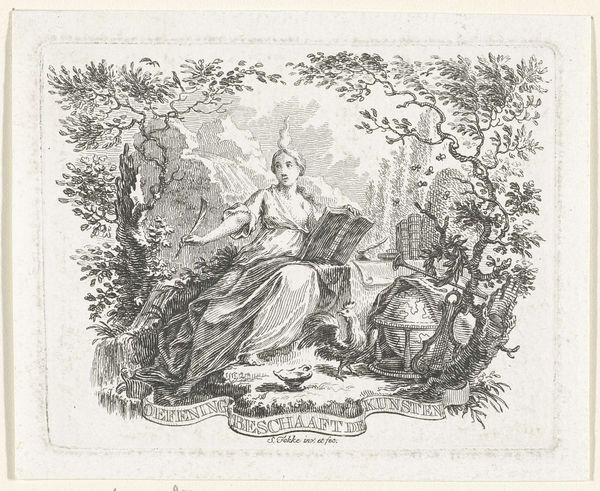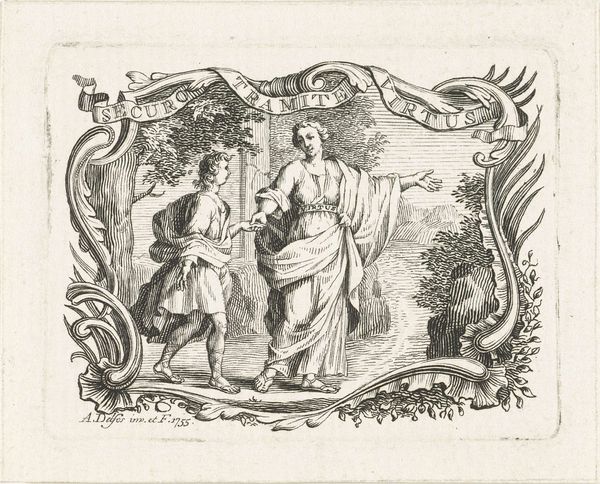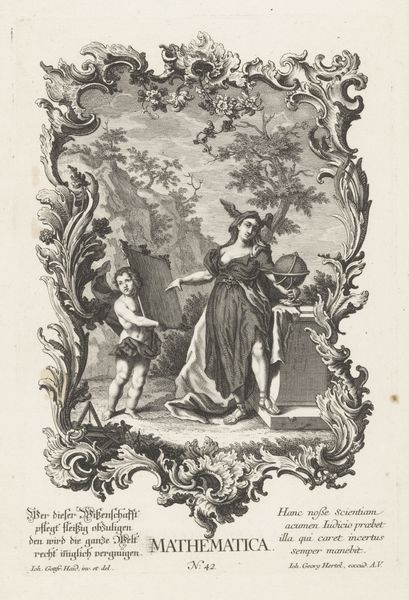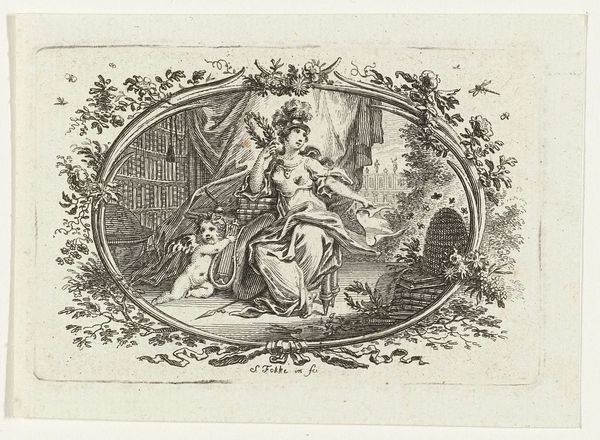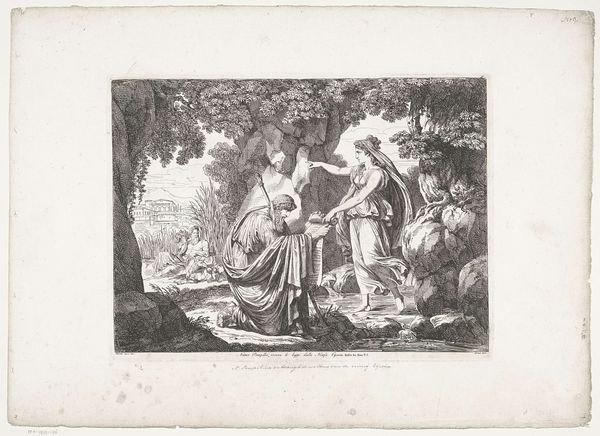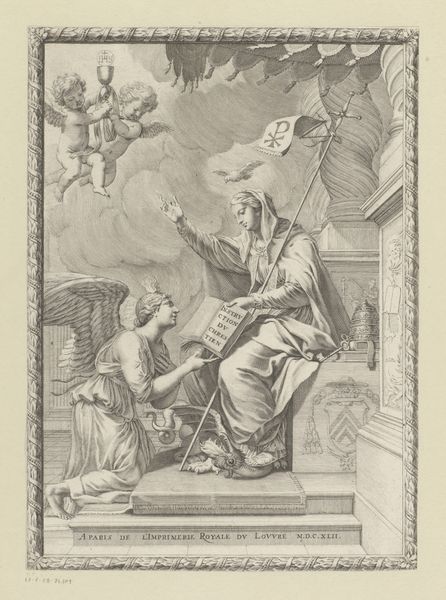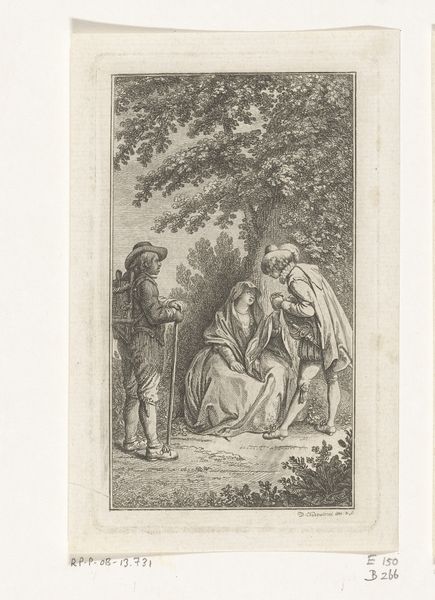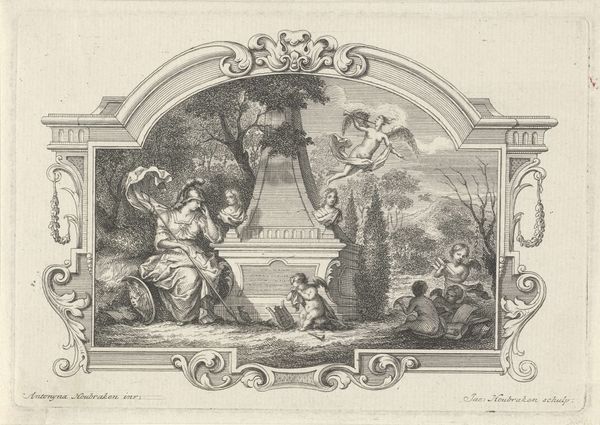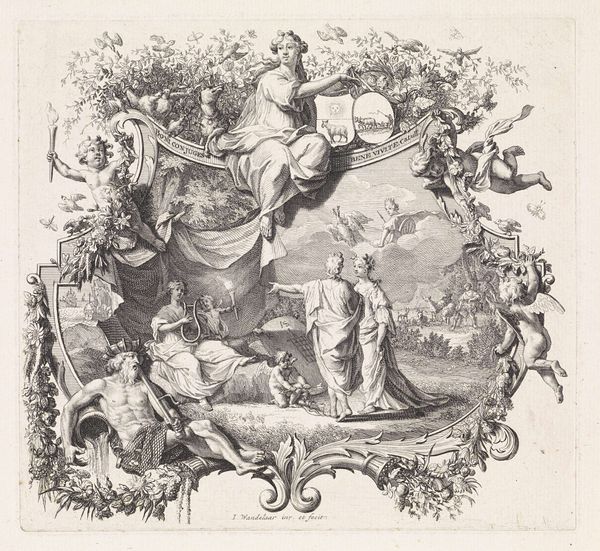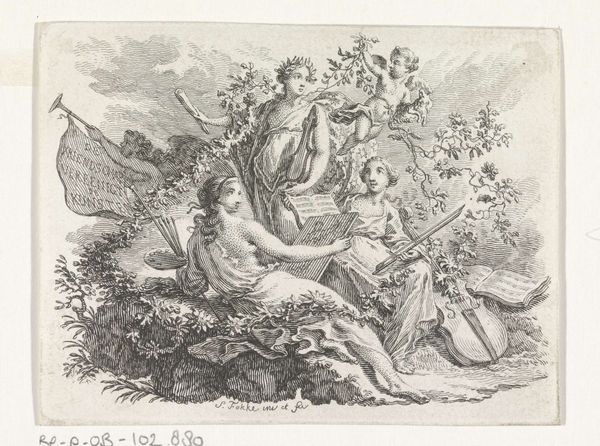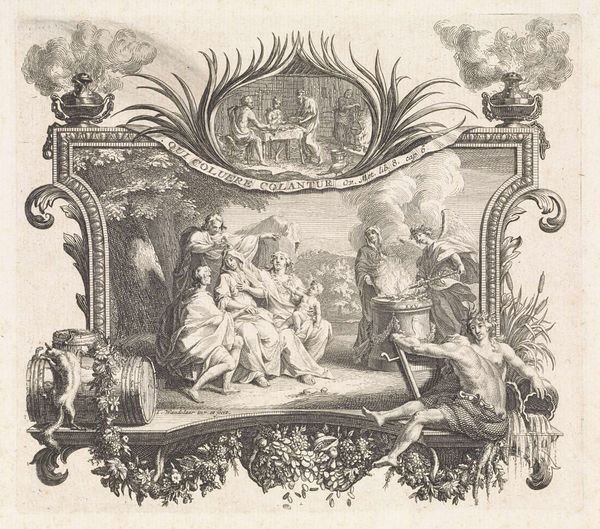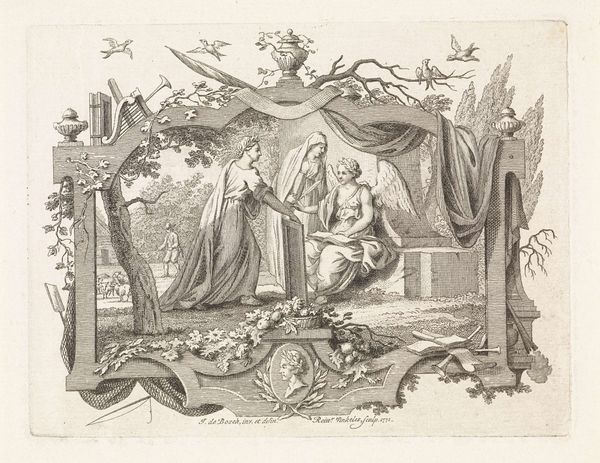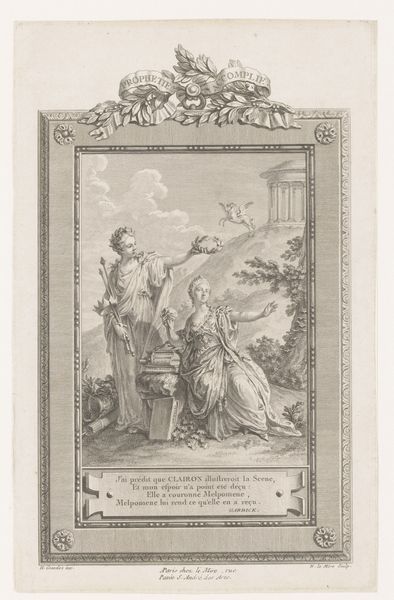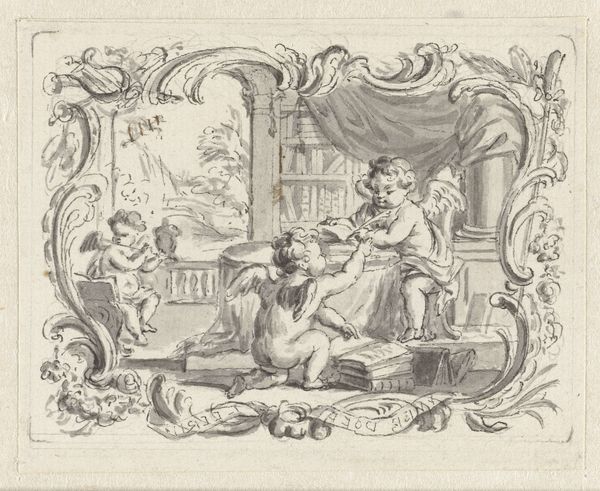
Dimensions: height 113 mm, width 135 mm
Copyright: Rijks Museum: Open Domain
This is an allegory on poetry made by Reinier Vinkeles, who lived from 1741 to 1816. It's an etching, meaning that the artist used acid to cut lines into a metal plate, which was then inked and printed onto paper. Look closely, and you'll see that this isn't just any drawing. Every line is the result of deliberate labor. Vinkeles had to be incredibly precise to achieve this level of detail. The density of marks creates the illusion of shadow and form, giving the image depth and texture. The figures, landscape, and decorative frame all required different approaches to the etching process, showcasing Vinkeles' mastery of the medium. Consider the social context. Etchings like these were often made for reproduction and distribution. They were a way to disseminate images and ideas to a wider audience, playing a crucial role in shaping public taste and opinion. The labor and skill involved in creating this print reflects the value placed on artistry, ingenuity, and intellectual exchange during Vinkeles's time. This small print reminds us that even seemingly simple images are the product of skilled work and complex social forces.
Comments
No comments
Be the first to comment and join the conversation on the ultimate creative platform.
